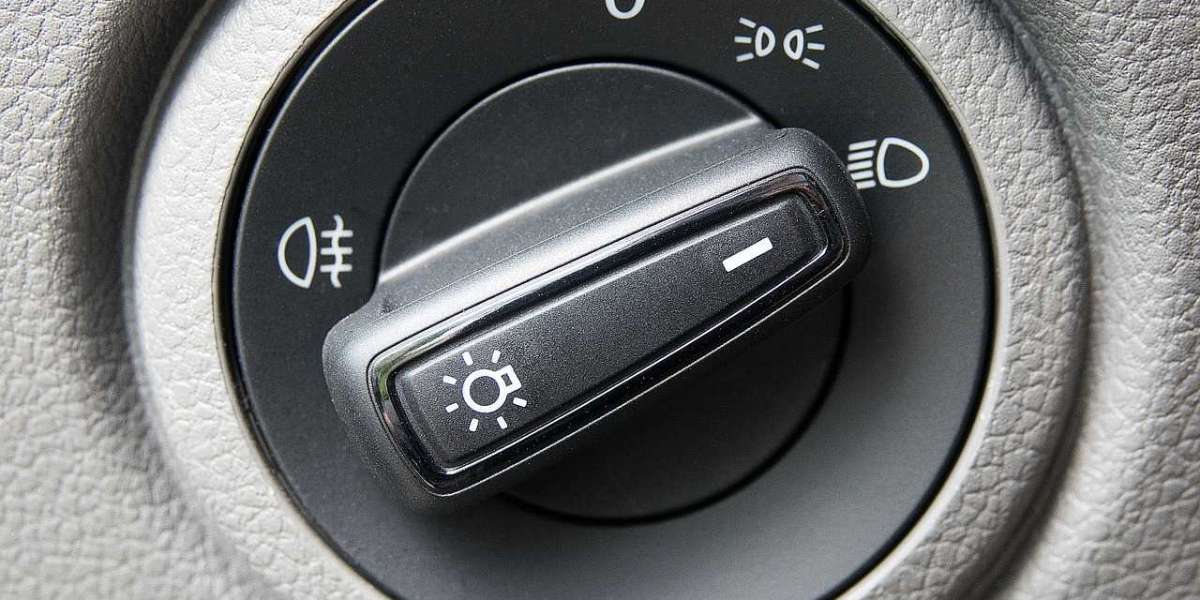A dimmer switch is a simple yet incredibly effective device used to control the brightness of light fixtures. It provides homeowners and businesses with the ability to adjust lighting levels, allowing for energy savings, mood setting, and extended lamp life. While commonly associated with traditional incandescent bulbs, modern Dimmer Switch are compatible with a variety of light sources, including LED and CFL bulbs. This comprehensive guide explores the types of dimmer switches, how they work, their benefits, and installation considerations, offering a complete overview of how dimmers can improve both the function and ambiance of a space.
What is a Dimmer Switch?
A dimmer switch is a device that adjusts the light output from a bulb, allowing users to increase or decrease the brightness. Unlike a standard on/off switch, which only offers two settings—on or off—a dimmer switch allows for continuous control over the light intensity, providing more versatility in how spaces are illuminated.
Dimmer switches can be installed for a variety of lighting types and applications, such as in living rooms, bedrooms, kitchens, and even outdoor lighting systems. They can be used to create ambiance, enhance the functionality of a space, or reduce energy consumption.
Types of Dimmer Switches
1. Rotary Dimmer Switches
Rotary dimmer switches are one of the most traditional and common types. These switches have a knob that rotates clockwise or counterclockwise to adjust the light level. They are easy to use and provide smooth, gradual changes in brightness. Often, rotary dimmers are found in older homes and are available in both manual and electronic versions.
2. Slider Dimmer Switches
Slider dimmer switches use a sliding mechanism, where a lever or bar moves up and down to adjust the brightness. They are often used in modern homes and offer a more precise level of control than rotary switches. Many slider dimmers also feature a separate on/off button for added convenience.
3. Touch Dimmer Switches
Touch dimmer switches allow users to adjust the brightness with just a tap of the finger. These switches are typically more aesthetically sleek and often used in modern or minimalist design schemes. They can be integrated into smart home systems and sometimes feature memory settings to remember previous light levels.
4. Smart Dimmer Switches
Smart dimmer switches are part of the broader category of smart home devices. They can be controlled via a smartphone app, voice commands, or through automation systems. Smart dimmers allow users to adjust the light intensity remotely, schedule lighting times, and even sync with other smart devices in the home. This technology is becoming increasingly popular in homes that prioritize energy efficiency and convenience.
5. 3-Way Dimmer Switches
3-way dimmer switches are designed for rooms with two light switches controlling the same light fixture from different locations. This is commonly found in stairwells, large rooms, or hallways. With a 3-way dimmer, you can adjust the brightness of the light from either switch, giving you full control no matter where you are in the room.
6. Dual Dimmer Switches
A dual dimmer switch allows you to control two separate light fixtures from a single switch. This type of dimmer is ideal for rooms with multiple light sources or for creating layered lighting effects, such as adjusting overhead lighting separately from accent or task lighting.
How Do Dimmer Switches Work?
Dimmer switches work by regulating the flow of electricity to a light bulb. Traditional dimmers use a variable resistor to reduce the amount of power going to the bulb, thus dimming the light. More modern dimmers, particularly those designed for LEDs and CFLs, utilize electronic circuits that control the amount of voltage reaching the bulb.
1. Incandescent and Halogen Bulbs
For incandescent and halogen bulbs, dimmers work by altering the voltage supplied to the filament. As the voltage is reduced, the filament heats less, and the bulb dims. This type of dimming is smooth and consistent but can waste energy in the form of heat.
2. LED and CFL Bulbs
LEDs and CFLs use a different mechanism, as they are not reliant on a filament. Modern dimmers designed for these types of bulbs use electronic circuits to adjust the frequency of the power supplied to the light source. This allows for dimming without the loss of efficiency typically seen in incandescent bulbs. Additionally, dimmers for LEDs and CFLs often use low-voltage circuitry to ensure the bulbs function properly at lower brightness levels.
Benefits of Using Dimmer Switches
1. Energy Savings
Dimmer switches can help save energy by allowing users to reduce the brightness of lights when full intensity is not necessary. Lowering the brightness of a light bulb reduces the power consumption, which can lead to lower electricity bills over time. For example, by dimming a light by 50%, you can save about 20-30% on energy use.
2. Extended Bulb Life
Dimming a light not only saves energy but can also extend the lifespan of your light bulbs. For incandescent and halogen bulbs, operating at a lower wattage means less heat is generated, which reduces the wear on the filament. For LED and CFL bulbs, dimming ensures that the light is operating within its optimal range, preventing premature failure.
3. Improved Ambiance
Dimmer switches are perfect for creating ambiance in a room. Whether you want to set a relaxing mood in the living room, increase the brightness in the kitchen for cooking, or reduce light levels in the bedroom for a restful environment, dimmers provide control over the lighting atmosphere. They are essential in places where different lighting levels are needed throughout the day.
4. Increased Control and Flexibility
Dimmer switches give you greater control over your space. Instead of being limited to full brightness or complete darkness, you can adjust lighting to suit the time of day, your activities, and personal preferences. This flexibility helps enhance the overall functionality of a room, whether it’s for reading, entertaining, or relaxing.
Installation and Considerations
1. Choosing the Right Dimmer
When installing a dimmer switch, it is important to ensure that it is compatible with the type of lighting you have. Not all dimmer switches work with every bulb. For instance, older dimmers designed for incandescent bulbs may not work properly with LED or CFL bulbs. Always check the manufacturer’s recommendations for compatibility before purchasing.
2. Installation Process
The installation of a dimmer switch generally requires replacing the existing standard light switch. The process can be done by a professional electrician or a skilled DIYer. Basic installation involves turning off the power to the circuit, removing the old switch, wiring the new dimmer to the circuit, and securing the dimmer in place.
For smart dimmers, additional steps may be required to connect the switch to a Wi-Fi network or a home automation system. This often involves downloading an app and configuring the switch to work with other devices.
3. Safety Considerations
Safety is paramount when working with electrical devices. Always ensure that the power is turned off at the circuit breaker before replacing or installing any electrical components. If you are unsure about the installation process or working with electrical systems, it is advisable to hire a licensed electrician.
Conclusion
Dimmer switches are a valuable addition to any home or commercial space, offering enhanced control over lighting levels and contributing to energy savings, extended bulb life, and improved ambiance. From traditional rotary models to modern smart dimmers, there are a wide variety of options available to suit any need. Whether you are looking to adjust lighting for comfort, functionality, or aesthetic purposes, a dimmer switch provides the flexibility and efficiency to meet your needs. As technology advances, dimmer switches continue to evolve, offering even more features, including voice control and remote access. Investing in a dimmer switch is not only a practical decision for energy efficiency but also a simple way to enhance the overall atmosphere of your space



